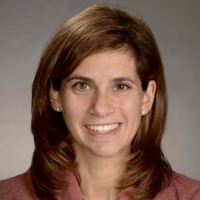TAMEST Conversation on COVID-19: Mitigating the Outbreak in Texas
TAMEST (The Academy of Medicine, Engineering and Science of Texas) hosted a conversation on mitigating the recent surge of COVID-19 cases in Texas on Tuesday, July 14, 2020. TAMEST members, Texas’ greater research community and more heard directly from coronavirus expert and TAMEST Member Peter J. Hotez, M.D., Ph.D. (NAM), along with two leading epidemiologists to discuss what steps officials and individuals can take to mitigate the outbreak.

Moderator: Peter J. Hotez, M.D., Ph.D. (NAM)
Dean
National School of Tropical Medicine
Baylor College of Medicine

Speaker: Rebecca Fischer, Ph.D.
Assistant Professor of Epidemiology & Biostatistics
Texas A&M University

Speaker: Lauren Ancel Meyers, Ph.D.
Professor of Integrative Biology
The University of Texas at Austin
Questions & Answers
TAMEST encouraged attendees to submit their questions for the panelists to answer live during the conversation. Below are the questions received for the moderator and speakers along with their answers.
Policy
1. Should the governor issue another stay at home order?
- Dr. Meyers: State and city leaders should enact measures to radically slow transmission, as soon as possible. That may mean different measures in different communities, but it’s critical that decision-makers have the leeway to take proactive (and, if too late, reactive) measures to protect their communities and avert overwhelming surges in hospitalizations.
Testing and Modeling
1. What about the effect of the lag/delay in testing results (meaning testing today in Austin you might not get your result for 7-10 days due to volume of testing)? How does this affect your modeling?
- Dr. Meyers: Unfortunately, biases and lags in testing data make it unreliable for estimating transmission rates and making forward predictions. For this reason, our models estimate transmission rates from COVID-19 hospital admission, discharge and death data combined with anonymized cell phone mobility data.
2. Regarding Dr. Meyers’ models, why is the standard for reporting positive cases the date of the test result rather than the date the test was taken? It seems that the test date rather than the result date would be more useful. Can local counties (e.g. Galveston County) get access to local forecasting if we provide the data?
- Dr.Meyers: As I mentioned just above, we generally shy away from making estimates from confirmed cases data because of biases, lags and other issues with the data. However, with any kind of data, we explicitly model the observational process. If we know how test data is reported (e.g., by date of symptom onset, date of test or date of test result), we can explicitly account for possible lags in our models.
3. Why do hospitals have difficulty with reporting cases on Saturdays and Sundays? Shouldn’t all delayed reports show a day diagnosed so we wouldn’t see large drops on the weekends?
- Dr. Meyers: In Austin, local hospitals provide comprehensive data on a daily basis, including weekends.
4. How much of an effect has testing procedures made in mitigating the outbreak? What are the possibilities for alternative rapid testing techniques to be implemented for maximizing the testing and diagnosing the infection at its bud for better healthcare and lowering the transmission?
- Dr. Meyers: Unfortunately, summer pandemic waves in most Texas cities have far surpassed our capacity to contain clusters via testing, contact tracing and isolation. A robust testing-tracing-isolation system can help to repress transmission when prevalence is low and the tests and protocol are sufficiently rapid and proactive to identify newly infected (often asymptomatic) cases before they have the opportunity to transmit to others.
5. Please explain how we expect the curve to go down, assuming it does. It went up sharply recently. As it declines, will it be more gradual? Why or why not?
- Dr. Meyers: It depends on the extent to which we reduce transmission. If we bring the reproduction number just below one, the pandemic will recede slowly. If we bring the reproduction number far below one (in the extreme, stop all transmission), then cases will decline more steeply. COVID-19 data from around the world exhibit variation in the rate of decline following sustained social distancing measures.
6. Remdesivir or dexamethasone are supposedly able to reduce the length of a hospital stay. Are patients in Austin receiving these treatments, and if you were to break down the data, can you see any effect?
- Dr. Meyers: Austin patients are receiving both of these treatments as well as plasma transfusion therapy. Their individual life-saving impacts are not yet clear.
Senior Care/ Impacts on the Elderly
1. What should this information mean in terms of your recommendations on what we as assisted living facilities should be doing differently? Are there specific new recommendations for us as providers that can help mitigate further risk to our populations?
- Dr. Meyers: Incentivize (pay) staff to stay home upon the slightest hint of symptoms/exposure. Limit the number of residents with which each caregiver interacts. Institute strict face mask, hand wash, distance, etc. measures.
Education
1. Is it safe to open both K-12 and college campuses? Both in rural and metropolitan areas?
- Dr. Meyers: As we discussed, this very much depends on the prevalence of COVID-19 in the community and the measures taken to prevent transmission both on and off-campus.
2. Are there any recommendations for the arts faculty in the public schools across the state of Texas on how to proceed and keep students safe as schools open in the Fall? Playing instruments? Singing? Etc.
- Dr. Meyers: I wish we could offer a validated list of ‘dos’ and ‘don’ts’, but there are still many uncertainties about the risks of transmission for children and for different age groups. That said, there is increasing evidence for aerosol transmission. For example, singing indoors in close proximity is likely a high-risk activity whereas painting outdoors at a distance is likely low risk.


